2006: GREEN TOP TEN
The happiest of New Years and warmest gratitude to New Energy News readers who have helped us get this newsblog up and running into 2007!
We Got Our Kicks In 2006; The Top Ten Green Stories of the Year
David Roberts, 22 December 2006 (Grist Magazine)
10. A Stern reminder…In October, venerable economist and senior U.K. government adviser Sir Nicholas Stern released a major report on global warming. Its claims were explosive…he smashed once and for all the myth that our choice is between spending money fighting global warming and saving money doing nothing. It turns out doing nothing will cost far more.

9. Takings is leaving…When Oregon voters passed Measure 37 in 2004, supporters of sustainable development despaired…Oregonians have a serious case of buyer's remorse, lamenting the erosion of some of the nation's most progressive land-use policies. Voters are wising up to the fact that takings measures tie a community's hands…
8. Carbon neutrality is the new black…New Oxford American Dictionary chose "carbon neutral" as its word of the year…sudden ubiquity of the idea…the Pearl Jam tour…Al Gore's movie…the private sector surged to meet the demand, with a new carbon offset company springing up every five minutes…Colleges are doing it. Weddings. Vacations. Big companies. Small companies. Movie stars. The Olympics. Your Aunt Mabel. Pretty soon we'll all be carbon neutral…
http://www.greencoast.org/node/10970

7. Grist officially out of punny California headlines…California has always kicked the rest of the nation's ass on environmental policy…its groundbreaking clean-car bill, its groundbreaking Million Solar Roofs plan, its groundbreaking greenhouse-gas targets…In 2006…it outdid itself. Assembly Bill 32 authorized the California Air Resources Board to start setting real, actual, tangible, measurable, pinch-me-I-must-be-dreaming emissions limits on specific industries…AB32 probably saved Arnold's ass. More Republicans like this, please.
6. Roadless! No, roadful! No, roadless!…The Roadless Rule was one of President Bill Clinton's last, best, and, ahem, only substantial environmental legacies. It put some 58.5 million acres -- nearly a third of national forest land -- under protection…In 2005, President Bush replaced it…In September 2006, U.S. District Judge Elizabeth Laporte…claimed the administration had not conducted proper environmental studies before yanking it ... almost implying that -- are you sitting down? -- they didn't really care about protecting forests. Dang activist judges.
5. Hi. My name is the United States of America, and I'm an addict…halfway through his January State of the Union speech…President Bush said…"America is addicted to oil."

…The oil-reduction goal he offered alongside it was flaccid…He's spent his time since cutting spending on conservation, energy efficiency, and alternative energy, pushing to drill every-damn-where, and hyping biofuels and hydrogen…And he's still BFF with Saudi Arabia…But still. His words almost instantaneously made conventional bipartisan wisdom out of what had long been a predominately progressive critique…Perhaps next year he'll mention peak oil…
4. God v. Dobson…In February, a group of 86 prominent leaders…signed the Evangelical Climate Initiative, which called on the federal government to take urgent action against the threat of global warming…pitting the old guard, which plans to keep flogging gay marriage until the checks stop coming, against the new guard, which is pushing to broaden the agenda to issues that involve fewer clear villains but actual, widespread suffering: global warming, poverty, and AIDS…The old guard includes such veterans as Chuck Colson and James Dobson…The new guard includes Jim Wallis, Rich Cizik, and kajillion-selling author and mega-church pastor Rick Warren. The old guard is losing members, while the new guard snagged Pat Robertson…

3. America takes Dick out of resources committee…The 2006 mid-term elections…Enviros lost a few long-time allies on the right side of the aisle…But they lost many more nettlesome pains in the ass…Perhaps the greatest source of green schadenfreude in a decade came with the defeat of Rep. Richard "Dick" Pombo, who used his perch atop the House Resources Committee to wage unremitting war on environmental regulation…Pombo was beaten by Jerry McNerney, a wind-turbine engineer…After six years of bleak news on the environmental front, Democratic committee control in both houses of Congress now opens the way for serious action on global warming and energy security…
2. Wal-Mart: America's leading source of cognitive dissonance…Wal-Mart's astonishing, almost comically ambitious goal -- to produce zero net waste and run entirely on renewable energy -- was announced late last year…it has been plodding steadily toward its sustainability goals, improving the fuel efficiency of its truck fleet, pressuring suppliers to reduce packaging, and filling its shelves with organic food…Wal-Mart's core business model -- importing cheap plastic widgets from overseas to sell in massive stores plonked down in the middle of Nowhere, Suburbia -- is inherently unsustainable in an energy-constrained future. But its open embrace of sustainability was just the latest in a string of ambitious corporate initiatives from biggies like Dupont and GE…to say nothing of the astonishing infusion of private venture capital in green industries like clean energy…going green is not a drag on the economy. It's the 21st century's biggest moneymaker.
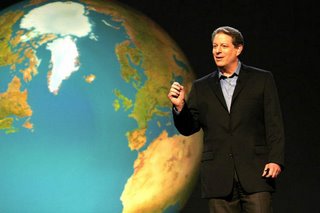
1. An inconvenient yet bizarrely popular truth…it's difficult to overstate the amount of credit that goes to one man: Al Gore…An Inconvenient Truth…has become the third-highest grossing documentary of all time, with the highest per-screen average of any documentary ever. It looks likely to win an Academy Award…The movie…opened the floodgates. There were news specials, congressional hearings, Jay Leno appearances, Oprah appearances, Daily Show appearances, public debates, and kitchen-table conversations…"skepticism" about climate change retreated…the debate over what to do about it got started…Thanks, Al.


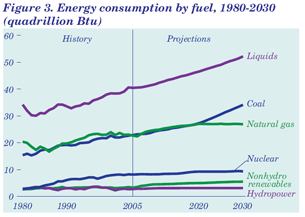










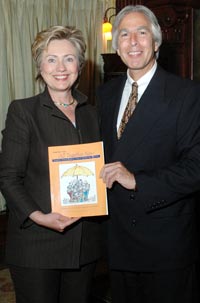
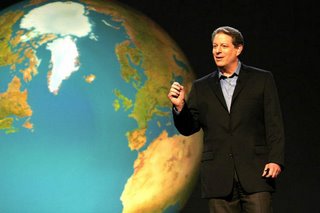
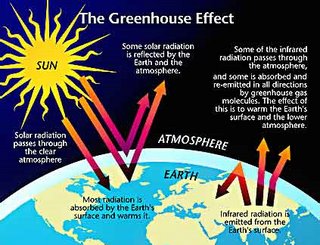




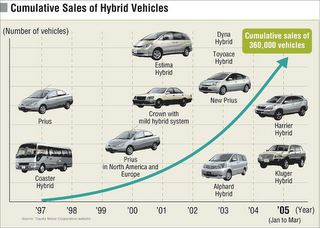












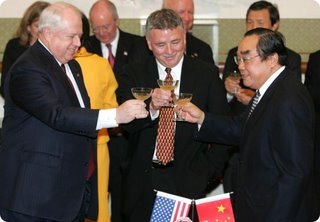













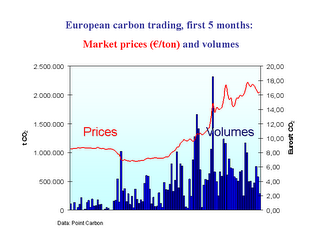



 Plug-in Hybrids, The Cars That Will Recharge America
Plug-in Hybrids, The Cars That Will Recharge America Oil On The Brain
Oil On The Brain



